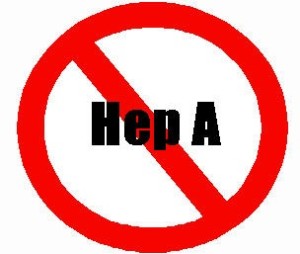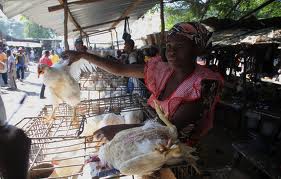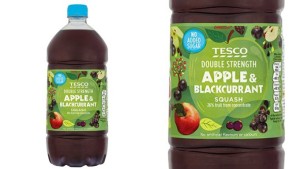Rodents are recognized as hosts of more than 60 zoonotic diseases that represent a serious threat to human health (Meerburg et al. 2009, Luis et al. 2013). This special issue emerges from a workshop organized in Bangkok at the Faculty of Veterinary Medicine of Kasetsart University and supported by the French ANR project CERoPath (Community Ecology of Rodents and their Pathogens in a Southeast Asian changing environment), which aimed at better understanding the relationships between rodent-borne diseases, rodents and their habitats using intensive field works, serology, and molecular screenings.
 The main objective of this workshop was to join ecologists, biologists, and epidemiologists to give an overview on the importance of rodents as hosts and reservoirs of parasitic and infectious diseases. Most of presentations given in the workshop focused in Southeast Asia, a hotspot of both infectious emerging diseases (Coker et al. 2011) and biodiversity at threat due to dramatic changes in land use (Morand et al. 2014).
The main objective of this workshop was to join ecologists, biologists, and epidemiologists to give an overview on the importance of rodents as hosts and reservoirs of parasitic and infectious diseases. Most of presentations given in the workshop focused in Southeast Asia, a hotspot of both infectious emerging diseases (Coker et al. 2011) and biodiversity at threat due to dramatic changes in land use (Morand et al. 2014).
A first challenge is related to the invasion or range expansion of rodents. The black rat (Rattus rattus), Norway rat (Rattus norvegicus), Asian house rat, (Rattus tanezumi) and Pacific rat (Rattus exulans) like the house mice (Mus musculus), have dramatically expanded their geographic range as a consequence of human activities (Aplin et al. 2011). All of these Rattus species originated in Asia, and can be found in sympatry due to their synanthropic behavior (McFarlane et al. 2012). These rodents have been implicated (Kosoy et al., this issue), and still are implicated (Kuo et al. 2011), in the emergence and spread of plague, murine typhus, scrub typhus, leptospirosis, hantavirus hemorrhagic fever, among others. A better comprehension of the range extension mechanisms and consequences in term of infectious diseases’ risks would require investigation of the genetics and immunology of these rodent species (Himsworth et al., this issue) as well on the ecological interactions among pathogens, vectors, and rodents. Gutiérrez et al. (this issue) in their review attempt to summarize and bridge some knowledge gaps in the transmission and distribution routes, and in the dynamics and composition of Bartonella-infection in rodents and their flea parasites.
A second challenge is that in order to better understand disease ecology and parasite transmission, it must be considered that not all hosts are equally involved in parasite transmission as some species (and individuals) can be responsible for a disproportionate number of transmission events (Paull et al. 2012). Some habitats or landscapes may also disproportionally enhance transmission or persistence of parasite and/or vector (Bordes et al. 2013). Indeed, by carrying and disseminating parasites across multiple habitats, generalist or synanthropic rodents could enhance both host-switching and spill-over to other rodent reservoirs and directly or indirectly to humans.
 Several articles in this special issue suggest high diversity of pathogens and parasites circulating among diversified communities of rodents across various habitats, such as Rickettsia spp. in Taiwan (Kuo et al., this issue), Bartonella spp. in Vietnam (Hoang et al., this issue) and in Thailand (Jiyipong et al., in this issue), leptospirosis in Vietnam (Hoang et al., this issue), zoonotic viruses in Vietnam (Cuong et al., this issue), and zoonotic helminths in Thailand (Chaisiri et al., this issue).
Several articles in this special issue suggest high diversity of pathogens and parasites circulating among diversified communities of rodents across various habitats, such as Rickettsia spp. in Taiwan (Kuo et al., this issue), Bartonella spp. in Vietnam (Hoang et al., this issue) and in Thailand (Jiyipong et al., in this issue), leptospirosis in Vietnam (Hoang et al., this issue), zoonotic viruses in Vietnam (Cuong et al., this issue), and zoonotic helminths in Thailand (Chaisiri et al., this issue).
This special issue calls for a more thorough investigation of rodent-borne diseases taking into account the ecology of rodents in their habitats. Taken together, the studies presented in this special issue stress the need to identify the mechanisms affecting pathogen diversity and infection within and between rodent species and to explain why some rodent species seem to be more resilient to greater habitat disturbance. Future research should monitor a variety of rodent pathogens simultaneously, including directly-transmitted specific pathogens and vector-borne pathogens with varying degrees of specificity.
Vector-Borne and Zoonotic Diseases. January 2015, 15(1): 1-2.
Morand S., Jittapalapong S., and Kosoy Michael













